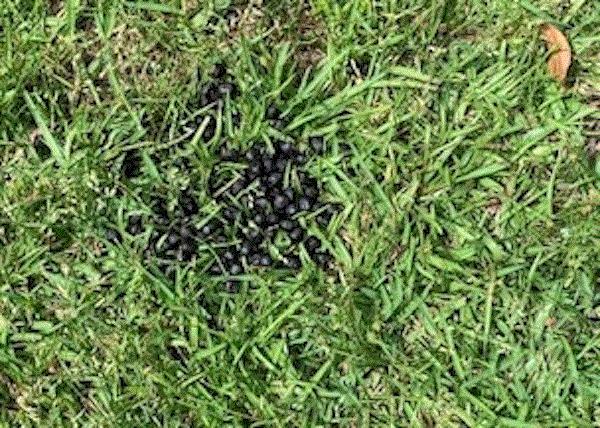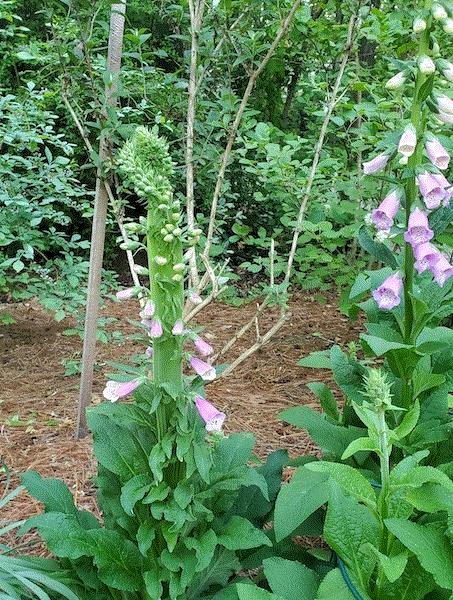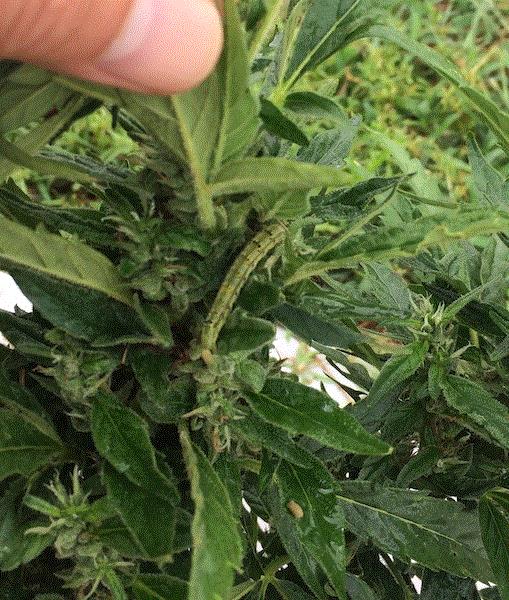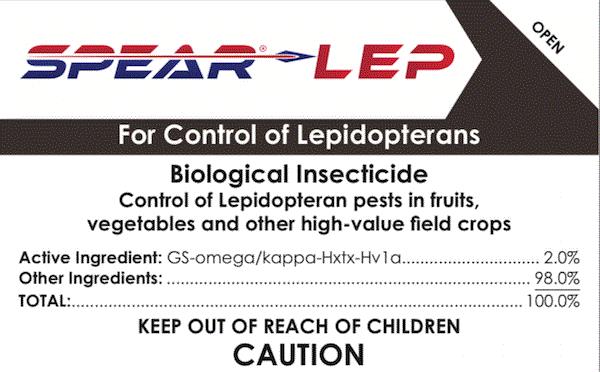What the ... ?
Do y’all remember last issue’s “What the … ?” mystery? It’s okay if you don’t. These days, I can hardly remember what day it is. I wake up every morning with a pair of large brown eyes of a dog staring at me, trying to detect any sign of movement and an invitation to approach. Nothing different to cue me on the day of the week. Here is another look at the mystery.

I asked you to tell me what you think those are. The verdict is in! I agree with many of you that these are deer doo-doo. Some suggested rabbit; it could be … but deer is more likely. We have an overabundance of deer in South Carolina, causing serious hazards on our roads. If those were tick eggs, like the client insisted, then we'd have a bigger problem than deer in your garden or on your windshield.
A couple of you also suggested a box of spilled raisins. Yes, I know the quality of the picture wasn’t great but raisins, really? Chris Beytes suggested a great way of testing this hypothesis—pop one in your mouth and you’ll find out real quick. Good one, Chris! Made me laugh and my wife rolled her eyes for days. “Boys!” That’s all she said.
Thank you for playing the game with me: John Ariss, Barbara Bravo, Robert Ciok, Allison Edler, Erica Hernandez, Kerry Frazier, Ayla Harville, Julie Keller, Debra Knapke, Deborah Lalumondier, Laura Ney, Mark Pavelek, Bobbie Schwartz, Pam Swisher, David Weiner, and Meg Williamson. It’s great to connect with y’all during this time of social distancing.
Here is another mystery we can solve together.
This picture was shared by Meg Williamson, who is in charge of our diagnostic lab at Clemson University. These foxgloves are from Meg’s garden. The foxglove on the right is growing right, but something is odd about the one on the left. What’s wrong?

Send me your diagnosis by clicking here. I don't have anything to reward those who send in the correct answer except for a mention in the next issue of this newsletter.

Spear-Lep labeled for hemp
One of the major pests of industrial hemp is caterpillar. Corn earworm is the major pest caterpillar species of hemp in South Carolina. They get fat and juicy, and leave a mess in the flowers.

Management options for caterpillars on hemp grown for CBD are limited. Many hemp growers I work with use Bt and neem for caterpillar management before flowering. Some use Helicoverpa NPV (Helicovex is one product). Hemp growers now have a new tool.
Spear-Lep, a biopesticide by Vestaron Corp., has received EPA approval to add hemp to its label. The active ingredient of Spear-Lep is GS-omega/kappa-Hxtx-Hv1a and has been registered since 2014. Spear-Lep was introduced for fruits, vegetables and field crops in 2018. Vestaron has made a more concerted effort in marketing its family of Spear products in the past year. If you are interested in learning more about the Spear line of products, click here.

GS-omega/kappa-Hxtx-Hv1a sounds like a mouthful of mumbo jumbo, but the active ingredient is quite fascinating (to a geek like me anyway). GS-omega/kappa-Hxtx-Hv1a is a neurotoxic peptide originally identified in the venom of the Australian Blue Mountains funnel-web spider. The peptide works on the nervous system of insects by binding to its target site and messing up the firing frequency of the neurons. Insects poisoned by the peptide are paralyzed, as if a spider bit them. Because of this novel mode of action, IRAC classifies GS-omega/kappa Hxtx-Hv1a peptide in its own group, Group 32, nicotinic acetylcholine receptor allosteric modulators – Site II.
Spear-Lep can be used in conjunction with Bt products. As I mentioned in the last issue, Bt basically rots the guts of caterpillars. The wounds caused by Bt allow Spear-Lep to enter the hemocoel (body cavity of invertebrates) and work on the nervous system. Leprotec, which I introduced in a previous issue of this newsletter, is a pre-mix combination of Bt subspecies kurstaki and GS-omega/kappa-Hxtx-Hv1a. The combination of Bt and GS-omega/kappa-Hxtx-Hv1a increases the efficacy and speed of activity against caterpillars.
Spear-Lep has a four-hour re-entry interval, zero-day pre-harvest interval and is minimal residue level (MRL) exempt. One more benefit of Spear-Lep is its compatibility with pollinators and natural enemies. You’d be surprised how many predatory bugs, ladybeetles and other predators you can find in a hemp field if you just look closely.
By the way, a great presentation on hemp IPM by Whitney Cranshaw of Colorado State University is available from the Northeast IPM Center. You can access a copy of that by clicking here.

Thrips management
I don't know about y’all (since I can't travel and visit you these days) but I’m getting quite a few thrips in my own research greenhouses in the last few weeks.
Management of thrips can be as fluid as … well, okay, I can’t find a good analogy for this fluidity. Every operation has to look at their practices and tolerance, and develop a management plan to meet their management goal.
I think thrips management begins in the spring. In areas where greenhouses are still tightly shut in the spring, the major source of thrips is the cuttings or other incoming materials. I suggest a pre-plant dip of the cuttings in a nematode (Nemasys) or Beauveria bassiana (such as Botanigard and Velifer) solution. I will also group the incoming plants together if I can so that the thrips don’t spread everywhere. If any problem shows up during scouting, I can focus on these specific areas instead of everywhere.
In nurseries and greenhouses that open the sides or vents in the spring, thrips can easily disperse from the fields into the greenhouses. Screening is a possible approach when appropriate (think carefully about the mesh size so that the thrips can't get in and the airflow isn’t impeded). Prevention still plays a huge role in this situation. Pre-plant dip and isolation as mentioned before should be done if possible. Prevention can also be achieved with releases of biological control agents or banker plants. These biological control agents are like my “standing army” that can deal with thrips infestations that show up. Yes, it’s a bit more expensive to take this “standing army” approach, but it is so much more effective to prevent damage than to cure or eradicate.
Often, though, damage occurs even with the best prevention. Scouting is crucial in detecting any of these infestations. Once detected, additional biological control agents can be released, or insecticides applied. Be smart about using insecticides when you’re also using biological control because many biological control agents are quite sensitive to insecticides.
So, what are the most effective insecticides for thrips management? Read on.

IR-4 publishes thrips efficacy summary
IR-4 published its thrips efficacy summary last week, which gives us a large amount of data on the efficacy of several insecticides. Click here for a copy of the summary.
Since thrips has often been listed as the Number 1 or 2 most important pests for growers, IR-4 has conducted numerous trials to evaluate the efficacy of 89 products (containing 59 different chemical and biological active ingredients) against chilli thrips, gladiolus thrips, privet thrips, weeping fig thrips and western flower thrips. Since western flower thrips is our major pest species, I will focus my discussion on this species.
The IR-4 thrips efficacy summary identifies several products as generally providing good to excellent efficacy: Aria (flonicamid), Avid (abamectin), Flagship (thiamethoxam), Hachi-Hachi (tolfenpyrad), Mainspring (cyantraniliprole), Overture (pyridalyl), Pradia (cyclaniliprole + flonicamid), Pylon (chlorfenapyr), Safari (dinotefuran), Sarisa (cyclaniliprole), and XXpire (sulfoxaflor + spinetoram). My experience with these products generally agrees with the summary.
Mesurol also has good to excellent efficacy in the IR-4 trials, but I only bring out this big gun when all hell breaks loose. Botanigard ES (Beauveria bassiana) is reported as having good efficacy in the IR-4 summary, but its efficacy has been variable in my experience. One of my go-to products for thrips management, Conserve, has variable efficacy against western flower thrips in the IR-4 trials. Other products that give variable efficacy are AzaGuard (azadirachtin), Kontos (spirotetramat), Grandevo (Chromobacterium subtsugae), Proud 3 (thyme oil), Tristar (acetamiprid) and Venerate (Burkholderia sp.).
Lots more information on the efficacy of selected insecticides in the IR-4 thrips efficacy summary. Check it out.
I want to mention the efficacy of drench application against thrips before I sign off today. In my trials, I noticed very good efficacy of drench application of Flagship, Safari and Mainspring in protecting leaves from stippling. But drench application was not effective in protecting flowers. For those who sell flowers for a living, you’ll have to protect the flowers with spray.





See y'all next time!

JC Chong
Professor of Entomology at Clemson University
This e-mail received by 23,030 subscribers like you!
If you're interested in advertising on PestTalks contact Kim Brown ASAP!